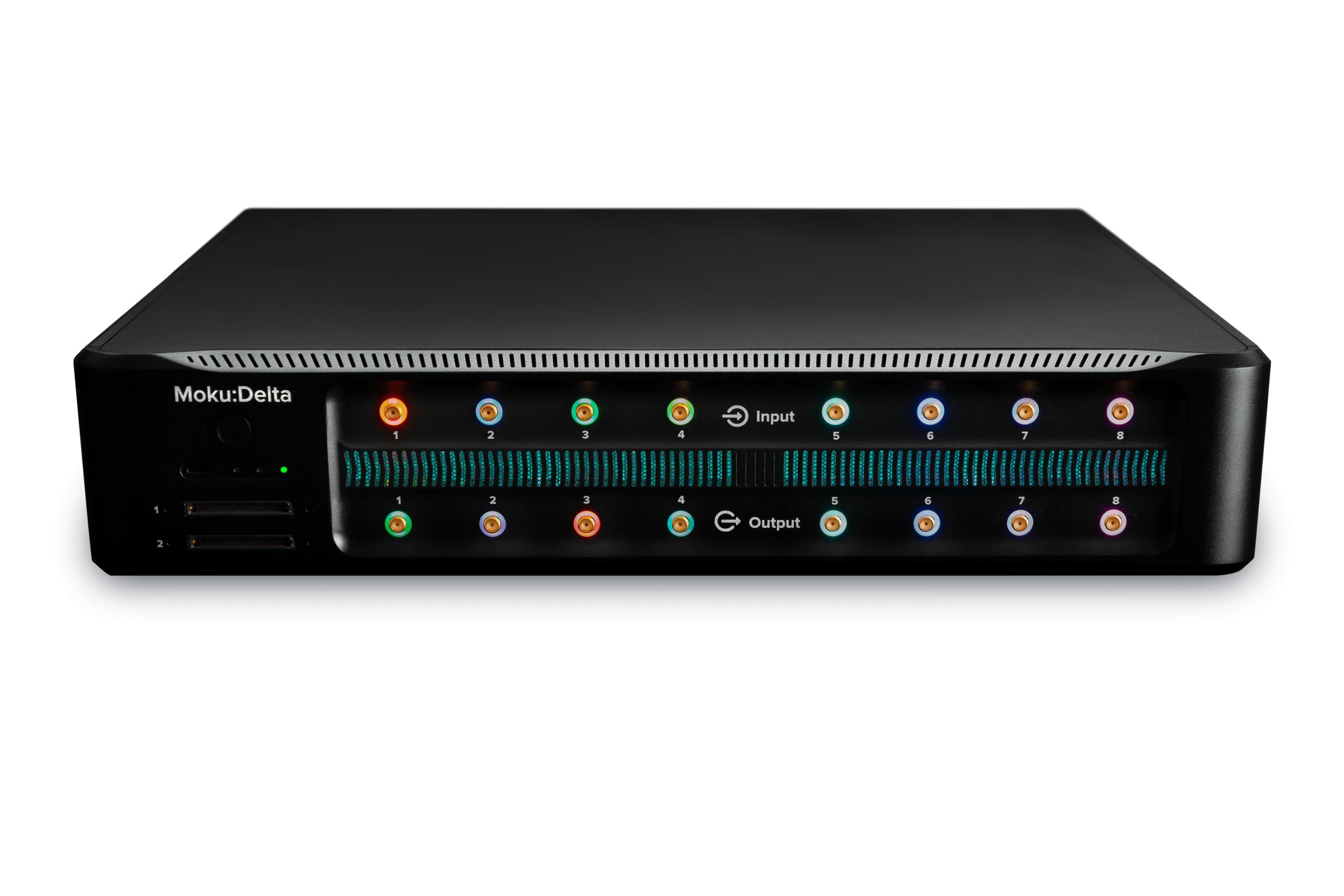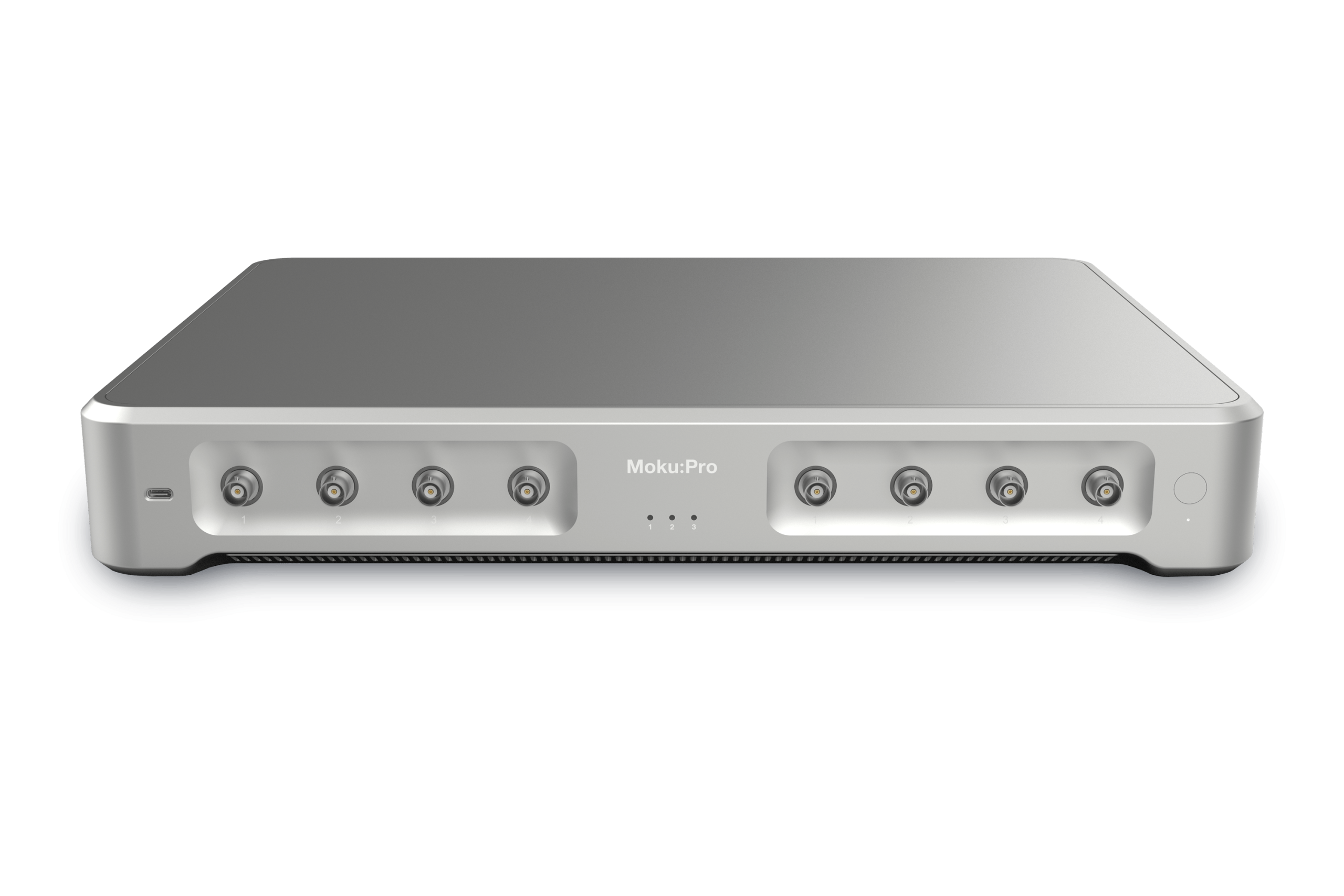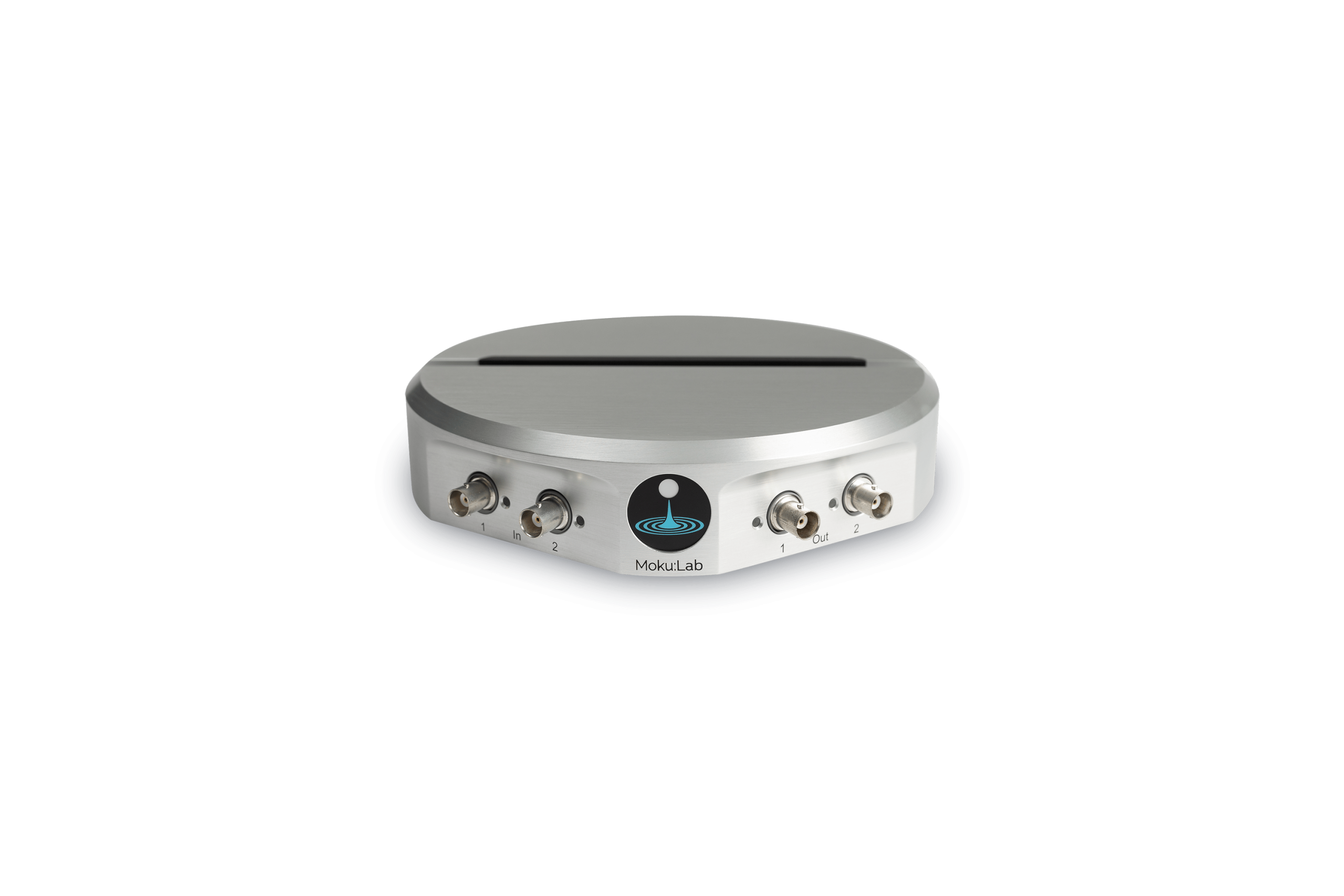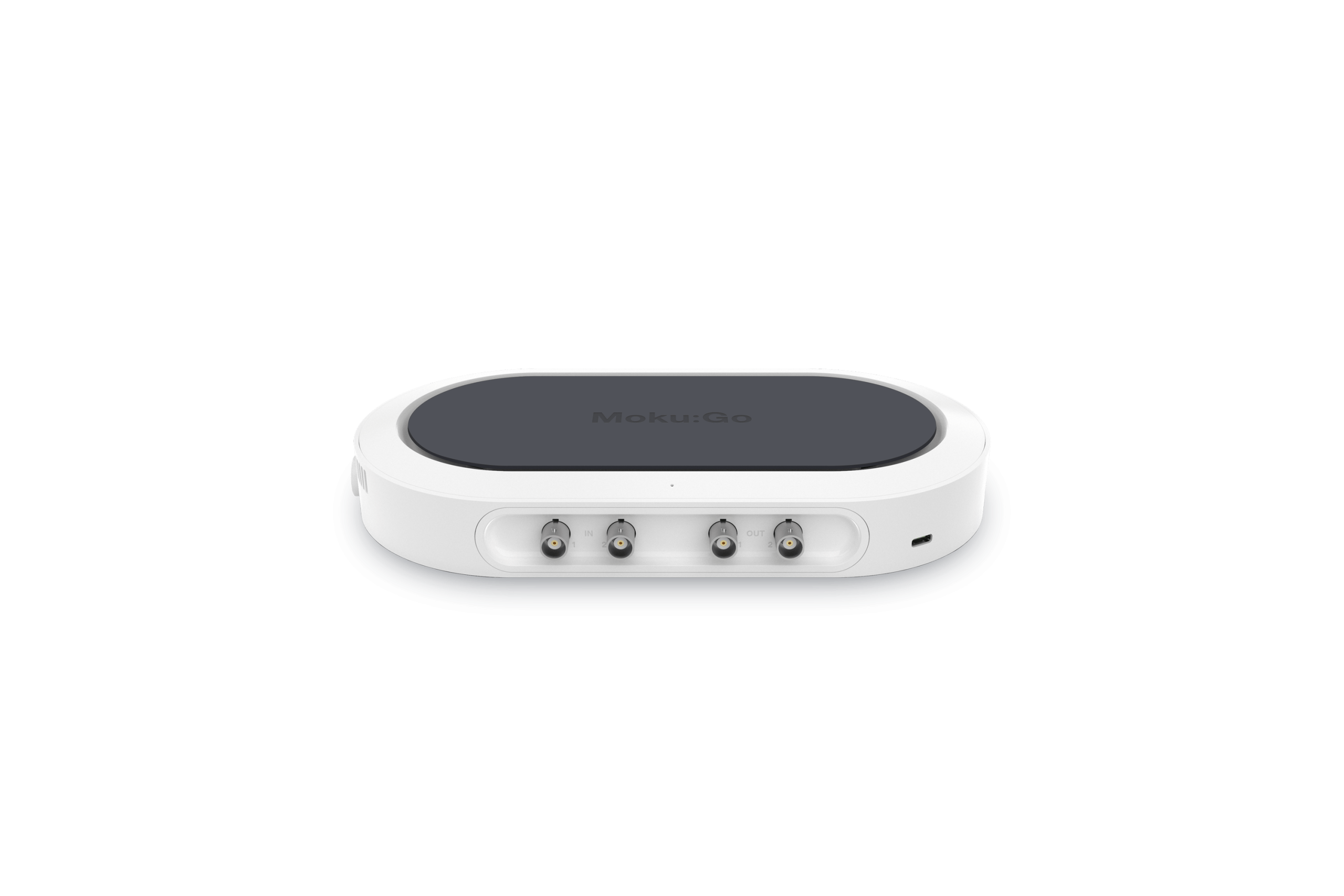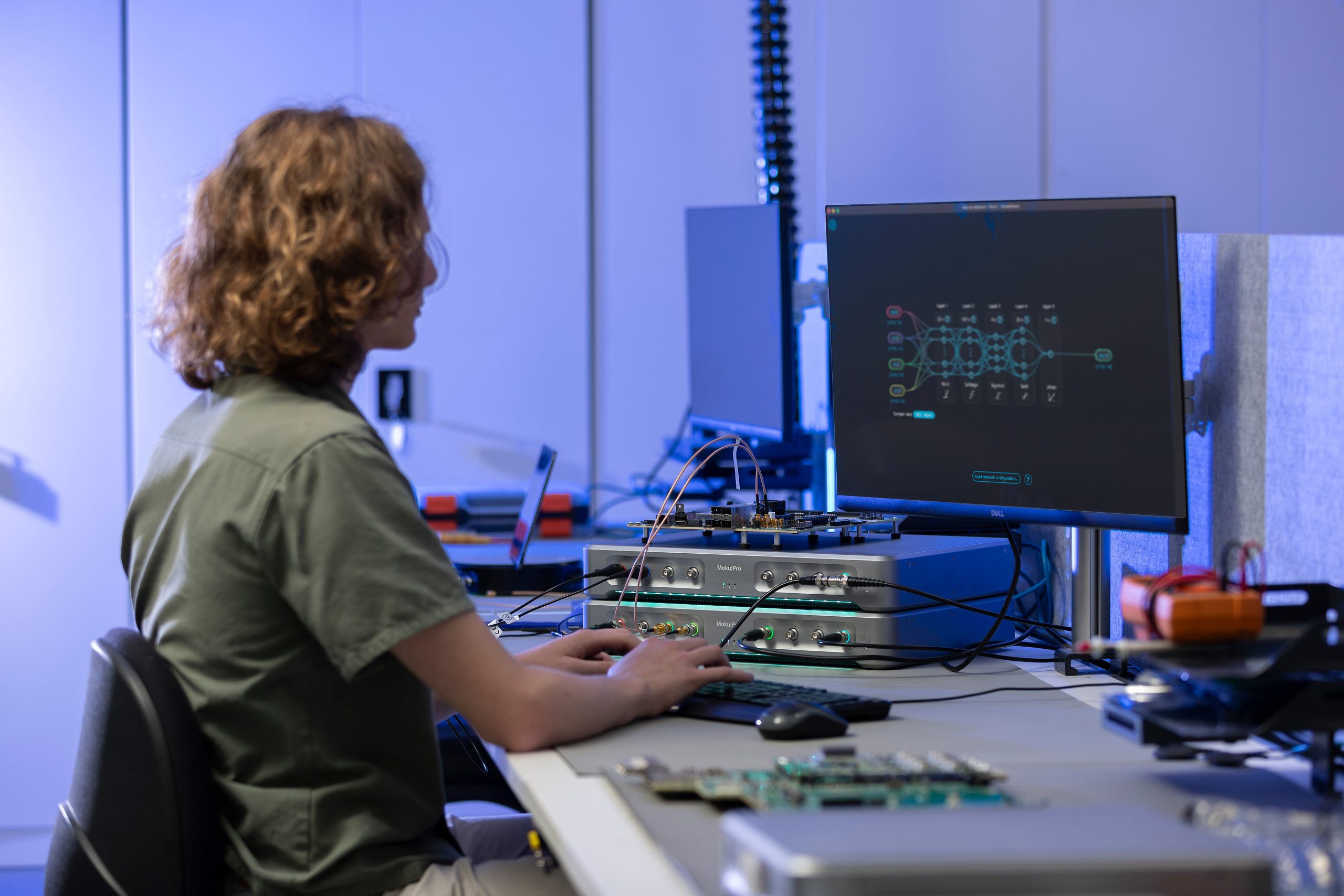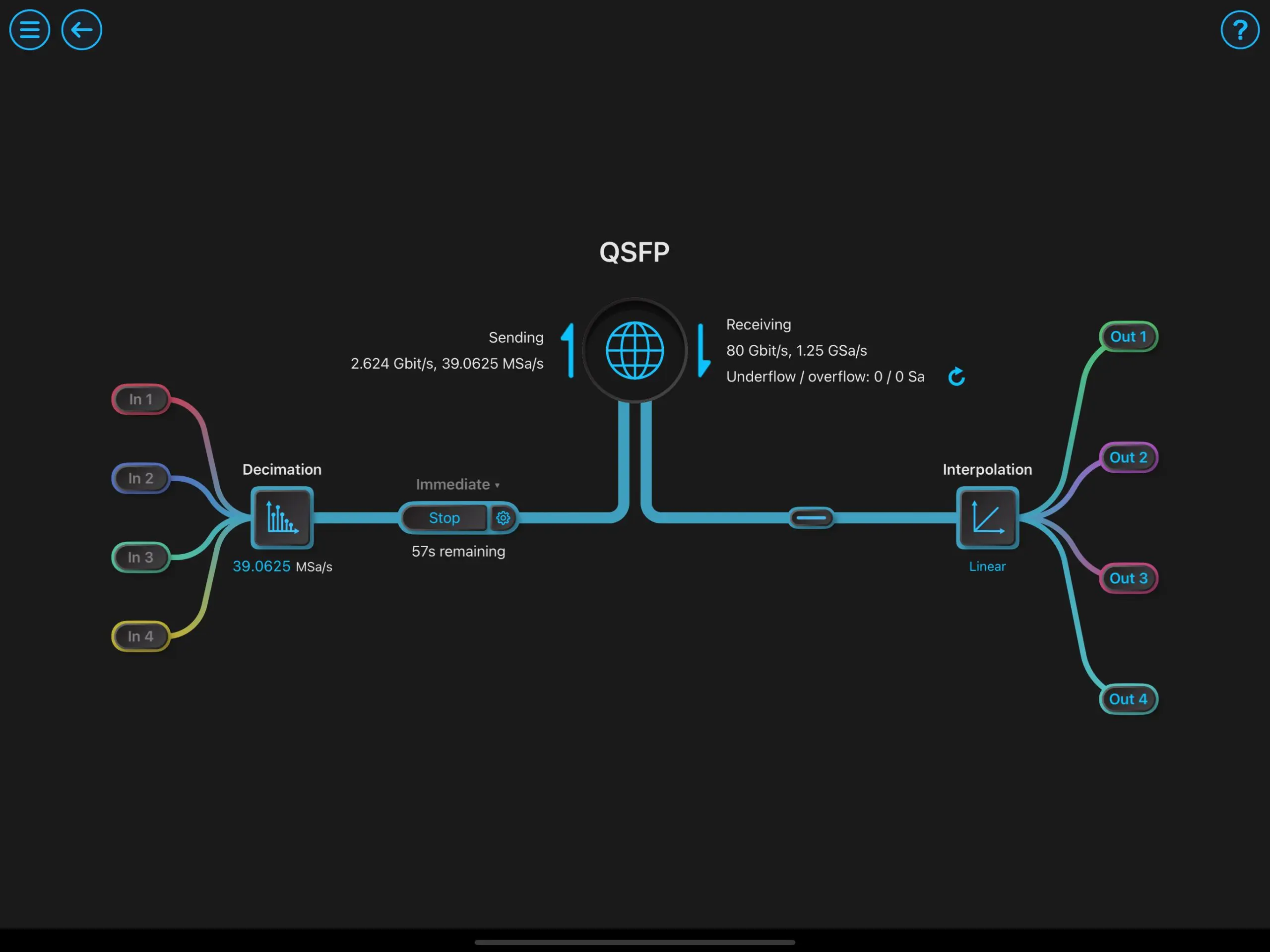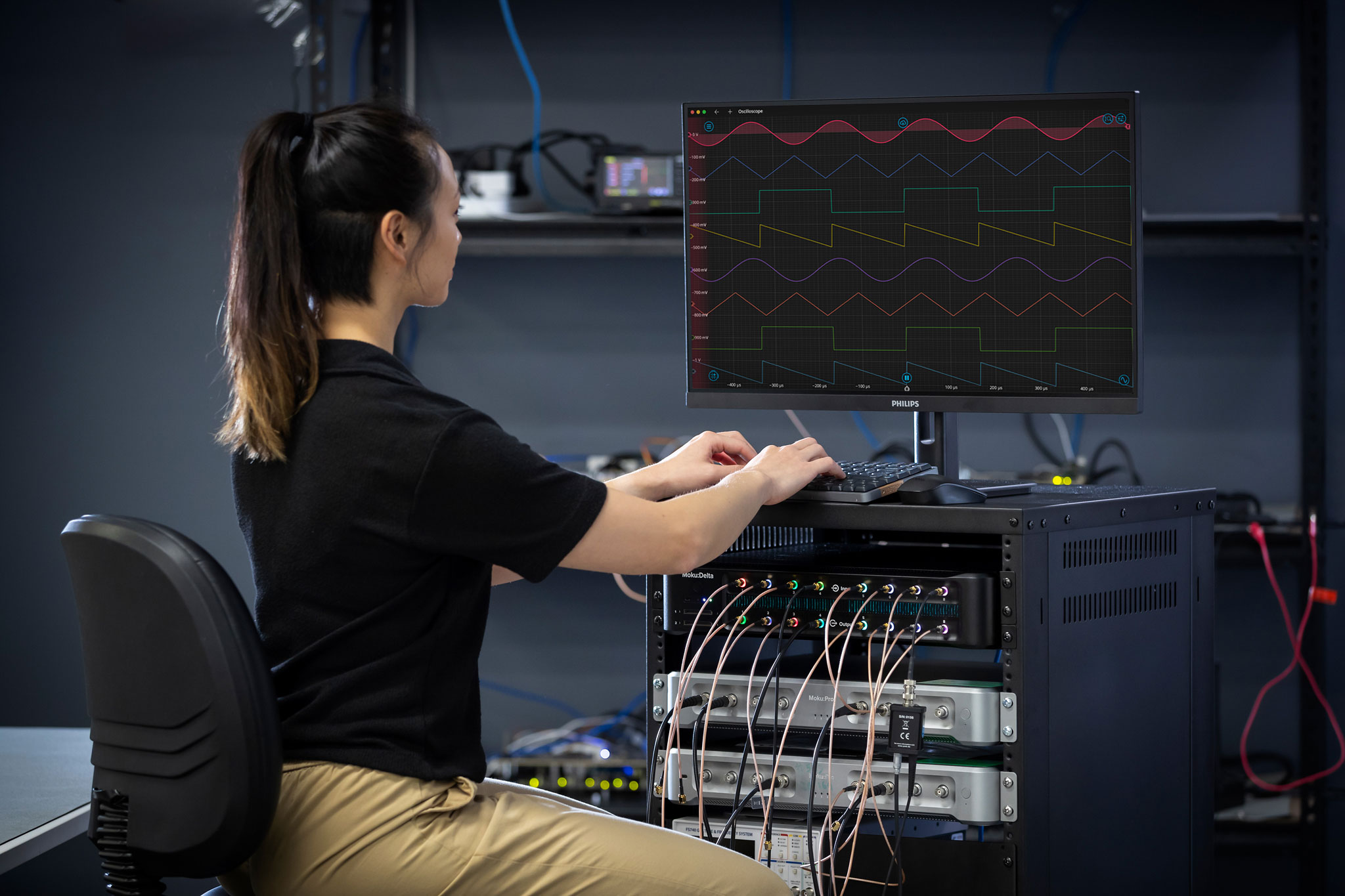The most requested Moku feature in 2023 was to add the ability to manipulate the Data Logger instrument with a trigger signal. This seemingly simple request has quite a few variants that each solve unique challenges for different applications. With the release of Moku Version 3.1.1 in December 2023, we’ve taken the first step to dramatically improve Moku for data acquisition by enabling triggered start functionality for the Data Logger instrument and other select instruments with an embedded Data Logger (Figure 1). Let’s have a quick look at how this works, and see a sneak preview of what’s coming next.
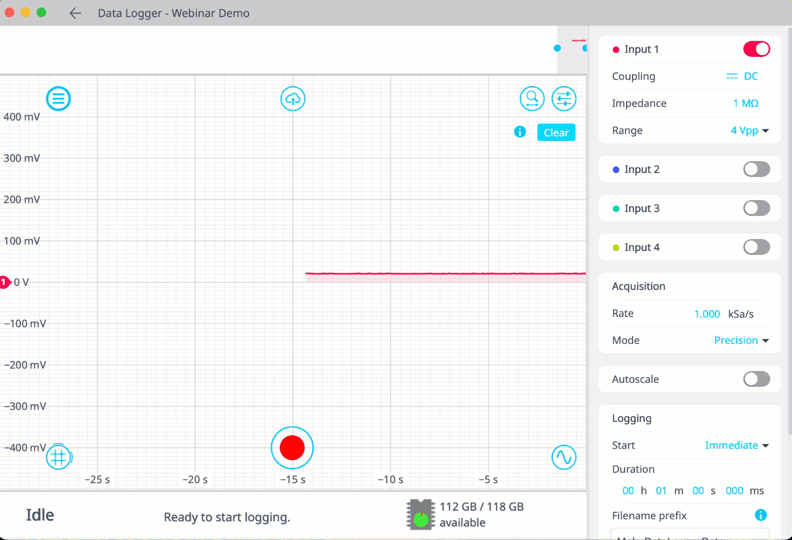
Figure 1: With the release of Moku Version 3.1.1, we’ve enabled triggered start functionality for the Data Logger instrument and other select instruments with an embedded Data Logger.
Triggered start
The simplest version of triggered data logging is using a rising edge of a signal to begin logging data. Triggered start is useful in two different ways: synchronizing with an external event, and synchronizing multiple Data Loggers within a Moku device.
In many experiments, data collection begins only after some external condition is met. For example, you might need to wait for your laser to warm up and stabilize before you can use it for a metrology application. Or in microscopy, the stage may need to reset to its home position before you start the raster and begin capturing data. Triggered start makes this waiting period trivial. Now you can just enable the mode, arm the trigger, and walk away. The Moku Data Logger will monitor the trigger signal at up to 5 GSa/s and begin recording data when it detects the trigger event. With Moku Version 3.3, Moku:Pro and Moku:Lab devices can now use the physical “Trigger” port to enable any Data Logger instrument with an external source.
Logging across multiple instruments
One of the most powerful features offered by the highly flexible Moku test platform is Multi-instrument Mode. In Multi-instrument Mode, Moku runs several parts of your experiment with different instruments operating simultaneously. Until release 3.1.1, it could be difficult to synchronize data generation and collection across multiple instruments in Multi-instrument Mode. But with triggered start, for example, you can now start a Waveform Generator and Data Logger at the same time, collecting results only while driving your experiment. When building a custom test system, you can also now start the embedded Data Loggers within certain instruments all at the same time, guaranteeing simultaneous sampling throughout every point in your experiment.
What’s next?
Triggered start adds a lot of capability for instrument synchronization both inside and outside Moku. Now that the building blocks are in place, we will continue to add more triggering functionality to our Data Logger and other instruments that support data acquisition. For example, what if your data is only valid for some time, so you have to both start and stop your acquisition on a trigger? If you’ve gated your acquisition so it’s not running continuously, then each acquisition can run at a higher sampling rate without overflowing the internal buffers. Finally, if you’re able to acquire for shorter lengths and higher sample rates with a trigger, then how about capturing a short burst like this manually?
We have a host of exciting features coming down the pipeline, with triggered start available now for all Moku users with a simple software update. For us, the most exciting thing about this update is that it is being driven directly by customer feedback. Have you tried triggered start? Which data acquisition feature should we implement next? Let us know on our User Forum or by emailing support@liquidinstruments.com.
